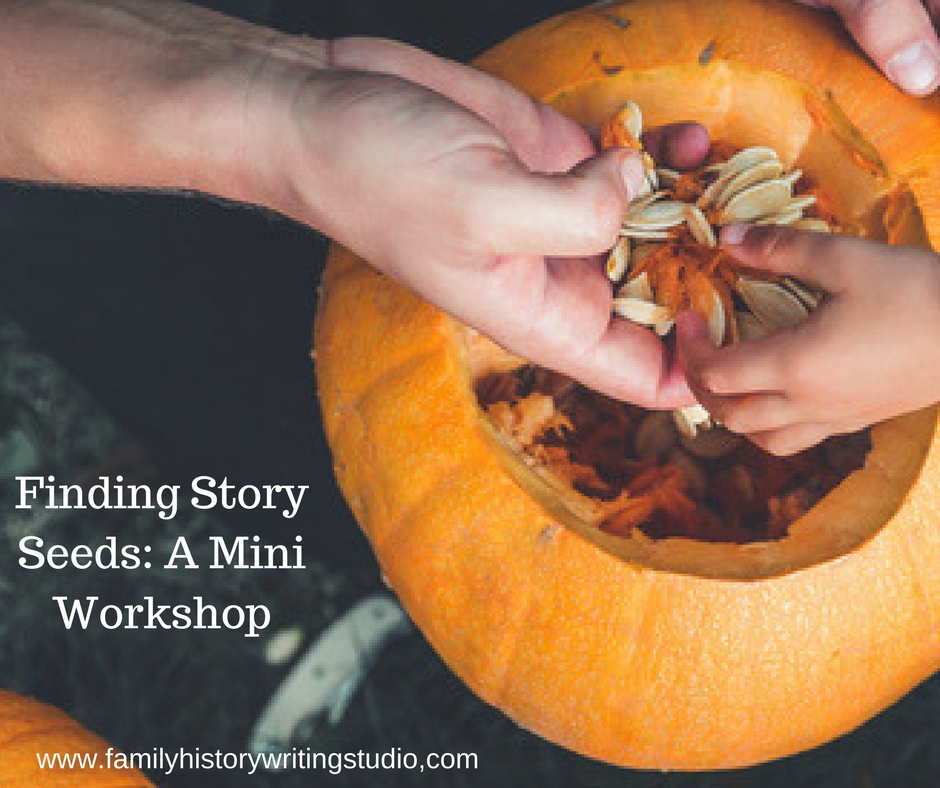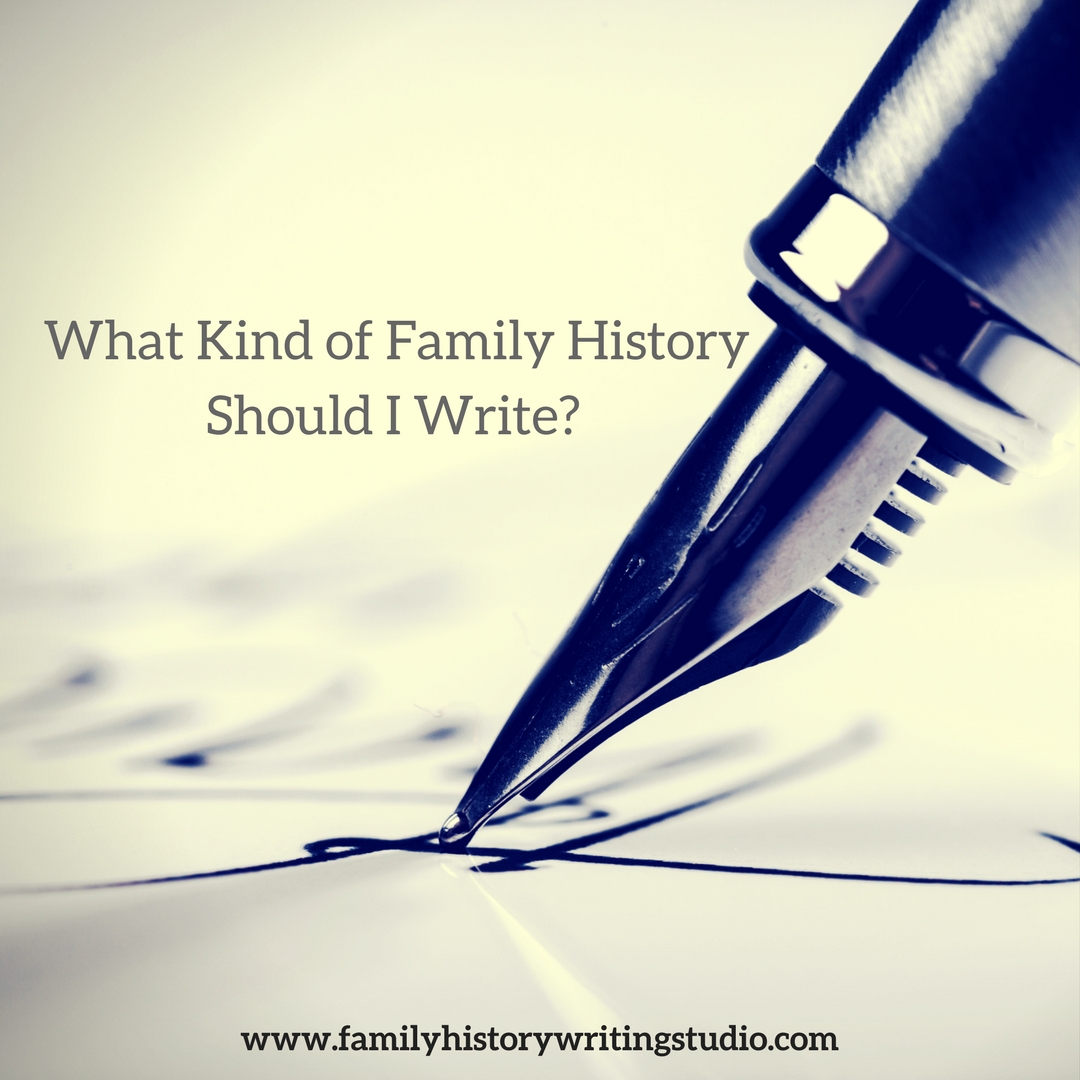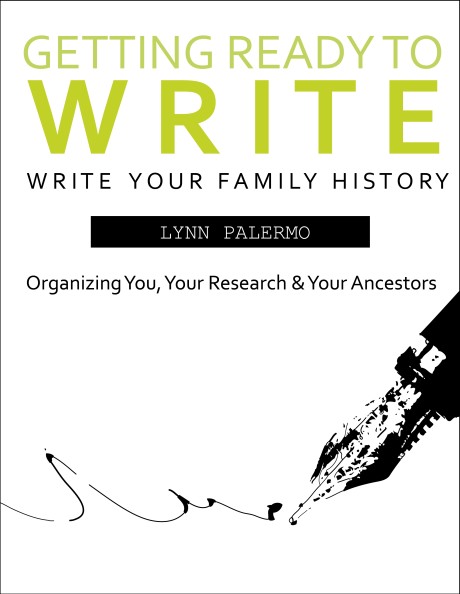The 4 Cs of a Good Plot
1 thought on “The 4 Cs of a Good Plot”
Comments are closed.
Related Post

Finding Story Seeds: A Mini-WorkshopFinding Story Seeds: A Mini-Workshop
All too often when we think about writing our family history stories, we contemplate writing about those big story ideas. We want to write an ancestor’s life story from birth to death. We think about writing our family history from as far back as we have researched to present day. These are pumpkins. Gigantic pumpkins.
Your family history might very well be an inspiring and insightful story. But when writing your family history, you don’t always have to go big. Sometimes there are little seeds of stories buried within your research. I love those stories because they zoom in and show our ancestors in their most personal moments. These intimate moments will resonate with your readers.
Often, we have these pumpkin size ideas. Pumpkin ideas are cumbersome and hard to carry. They tend to wear us down. They are overwhelming. When you write about huge topics, you can tire out and lose interest. Huge topics can also be challenging to write, with so many aspects to consider. It’s more fun to dig out the seeds than carrying around a big awkward pumpkin.
LET’S CARVE UP OUR PUMPKIN IDEA AND FIND THE SEEDS
For example, my mother’s life story is a pumpkin size idea. It’s a huge pumpkin with over 85 years of life to write about. Even if I break her life story down into subtopics, they can still be significant. Watch me do this with my mother. I jot down pumpkin-sized ideas in my notebook.
They might look something like this:
- Growing up in Northern Ontario
- Working on the Tobacco Farms in Southern Ontario
- Married life and raising children
In my notebook, I have carved up my pumpkin and listed all sorts of things that were interesting about my mother’s life, as you can see above.
Now that I’ve carved up my pumpkin, I begin to see the seeds and start to pull out those seeds.
- Her first job cooking and cleaning for a family
- The day she left home
- Blueberry picking trips
- Giving her baby sister her first bath
- Cooking meals at the Poorhouse
Ohhhh, see that!? Now, these moments are starting to sound more like stories, and less like topics. You saw how I did that, right? Finding my seed ideas inside that big pumpkin of a life story.
Now, you may already have ideas that are somewhat specific. Maybe you’ve carved your pumpkin already instead of leaving it whole. But I challenge you to zoom in and pull out those small seeds.
NOW IT’S YOUR TURN TO FIND SEED IDEAS
Grab your writing notebook, and identify an ancestor you want to write about. This is your pumpkin idea.
Next, create subtopics, carve up that pumpkin, usually around time periods or significant events in your ancestor’s life. They may look like this:
- marriage
- immigration
- buying land
- going to school
- career
Next, take that carved pumpkin and pull out the seeds, those little ideas within those topics.
For example,
Immigration
- Buying the ticket
- Seeing North America from the ship for the first time.
Job
- First day on the job
- Receiving an award
- Last day on the job
Marriage
- A funny event at the ceremony.
- First date
- Marriage proposal
Seed ideas are usually memorable moments in a person’s life, but they also can trigger random specific moments in their life that can hold significant meaning.
If you’ve been struggling to get your family history stories out, I’d suggest it could be that you’re carrying too large of an idea. Every time you write, remember to zoom into your ideas, carve up the pumpkin and start to pull out those small seeds. A seed idea is quite fun and manageable to write about!
Go on, dig out those seeds and start writing.

What Kind of Family History Should I Write?What Kind of Family History Should I Write?
Before you begin to write your family history stories, you have a couple of decisions to make. One of those decisions: What kind of nonfiction narrative do I wish to write?
Family History Narrative Using Third Person
In this format your ancestor is the main character of your story, he has a conflict in his life, and he overcomes obstacles towards a resolution. He has a goal, and the obstacles are keeping him from that aim. This objective may take many shapes, emigration, finding a job, surviving a war, starting a family, owning land, love, fortune, fame. The list is as plentiful as our ancestors. The story is the journey to overcome the obstacles standing in the way of the goal. The story serves as a vehicle to share your family history research in an entertaining format rather a dry summary of facts.
Family History Memoir Using First Person
You as the storyteller and your ancestor, as the main protagonist, share the story. Your ancestor struggles with a conflict towards an end goal, much like in the first-person narrative above. In addition, you, the narrator struggles to find records or understand decisions your ancestors made, uncover a family secret or dispel folklore and correct misinformation. This format provides you with the opportunity to reflect, offer an opinion, and share your theories and speculations.
 The two stories, your genealogical journey, and your ancestor’s story are weaved together to create an engaging tale for your readers.
The two stories, your genealogical journey, and your ancestor’s story are weaved together to create an engaging tale for your readers.
Both formats will enlist the help of narrative nonfiction to craft those stories.
You’ll often hear me refer to the tools of creative nonfiction or narrative nonfiction. Creative nonfiction is the genre closest to fiction in its structure, but unlike fiction, in that, every detail must be factually true.
Lee Gutkind, nonfiction writer, and author of You Can’t Make This Stuff Up, sums it up best.
“ The words “creative” and “non?ction” describe the form. The word “creative” refers to the use of literary craft, the techniques ?ction writers, playwrights, and poets employ to present non?ction—factually accurate prose about real people and events—in a compelling, vivid, dramatic manner. The goal is to make non?ction stories read like ?ction so that your readers are as enthralled by fact as they are by fantasy.”
Your job as a family history writer is to tell and educate the reader while at the same time entertaining them. Many may write family history using nonfiction to present their research. However, the use of creative nonfiction offers the writer the ability to use a narrative arc, with scenes, setting, characterization and description to engage the reader in the story. The goal is to help your reader make an emotional connection with your ancestor through your words.
You still need extensive research to support your story. You remain faithful to the facts, but in using the tools of creative nonfiction, you give a rich, engaging and entertaining story that will capture the interest of your family. It is no longer enough to offer a narrative summary and hope someone will read it. We must deliver a story that brings the reader along on a journey.
Thank you. I always find value in your content. I like the succinct concept of the 4 Cs. Easy to remember and employ.